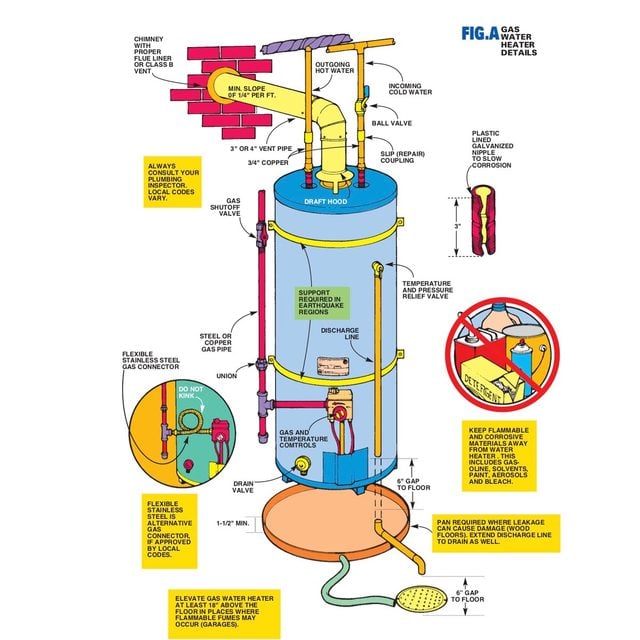Do It Yourself Water Heating System Installation: Crucial Steps for Success
When thinking about a Do it yourself water heating system installation, it is important to approach the job with a methodical way of thinking, as the procedure involves a number of critical actions that can considerably impact both safety and efficiency. Choosing the ideal water heating system for your specific requirements is simply the start; preparing the installment location and comprehending the necessary tools and products are similarly essential.
Choosing the Right Water Heater
When choosing a water heater, it is important to consider several crucial factors to make sure ideal efficiency and performance - water heater installation Buena Park. Firstly, evaluate the sort of hot water heater that ideal suits your demands. Options include tankless, storage space tank, and heat pump water heating systems, each offering unique benefits in terms of power performance and space demands
Next, examine the capacity required for your house. A bigger family members might require a device with a higher gallon capacity or a tankless system that can supply continual hot water. It's additionally important to think about the power resource; typical alternatives include electric, gas, and lp. Each energy type has ramifications for setup costs and long-lasting power costs.
Power efficiency is another vital element. Look for systems with a high Power Variable (EF) rating, as these designs take in less power and can significantly lower energy costs. In addition, look for service warranties and brand name dependability, as these can indicate the long life and upkeep demands of the unit. By carefully assessing these factors, you can pick a water heating system that lines up with your household's specific demands, making sure comfort and performance for years ahead.
Tools and Products Needed
Successfully mounting a hot water heater calls for not only the appropriate choice of device but likewise the appropriate tools and products. Before beginning on your DIY task, guarantee you have a detailed checklist of things to help with a smooth installment procedure.
Crucial devices include a pipe wrench, flexible pliers, and a screwdriver set (both flathead and Phillips), which will assist you manage different fittings and connections. In addition, a drill with suitable bits is necessary for placing brackets or making any kind of required holes. For safety, a voltage tester is critical, particularly when taking care of electrical water heaters.
When it comes to materials, get Teflon tape to ensure leak-proof connections on threaded fittings. You will likewise require a flexible water system line, which can be either knotted stainless-steel or PVC, depending on your preferences and local codes. Do not neglect to stock up on fittings, such as couplings and elbow joints, to link the plumbing safely. Finally, a frying pan or drip tray can help manage any prospective leakages, providing an included layer of safety. By collecting these products and devices in advance, you established the phase for an effective hot water heater setup.
Preparing for Installation
Prior to beginning the setup of your hot water heater, it is crucial to analyze the installation website to ensure it satisfies all essential demands. Beginning by validating that the browse around this site location is well-ventilated, especially for gas hot water heater, to stop the accumulation of harmful gases. Look for the accessibility of needed connections, consisting of water system lines and electric outlets, ensuring they are in excellent condition and properly located.

Additionally, check the existing pipes and electrical systems to establish if repairs or upgrades are needed before installment. This proactive approach not just makes certain compliance with regional building regulations but additionally enhances the long life and performance of the water heating system. Gather all needed authorizations, if essential, to prevent lawful complications later on. Correct prep work sets the phase for a smooth installment process and helps stop unexpected concerns.
Step-by-Step Installment Process
With the prep work full and all required evaluations conducted, the next stage involves the step-by-step installment of your water heating system. For tank-type water heaters, attach the chilly water supply line to the inlet, normally noted in blue, and the warm water line to the outlet, usually assigned in red.
Next, secure the temperature and stress safety valve, which is important for security. Attach the discharge pipe to this shutoff, directing it in the direction of the flooring or an ideal drainage location. For electrical versions, connect the power supply by removing the wires and securing them to the heating system's terminals according to the supplier's guidelines.
If you are setting up a gas hot water heater, guarantee the gas line is attached properly and look for leakages making use of a soap option. Connections are made, fill up the container with water before transforming on the power or gas supply. Ultimately, allow the hot water heater to get to the desired temperature level and check for any kind of leaks around all connections.
Ensuring Safety and Effectiveness
On a regular basis ensuring safety and security and performance throughout the installment and procedure of your water heating system is crucial for optimal performance and durability. Begin by choosing a suitable place that abides by neighborhood structure codes and provides ample air flow. Make certain that the location is devoid of combustible products and has adequate space for maintenance and evaluations.

After setup, conduct regular checks on the device address to detect leaks, corrosion, or uncommon news noises. Establish the thermostat to a risk-free temperature, generally around 120 ° F, to prevent scalding and enhance energy performance. Shield pipes to reduce warmth loss, which adds to reduce energy expenses.
Conclusion
Finally, successful do it yourself water heater setup pivots on mindful preparation and execution. Choosing the ideal water heater, preparing the setup area, and following a systematic setup procedure are critical steps. Sticking to safety standards throughout the installation makes certain both safety and security and efficiency. Additionally, routine upkeep checks post-installation will add to the ideal efficiency of the water heating unit, inevitably improving the long life and efficiency of the system. Effectively setting the thermostat further makes sure risk-free operation.
When considering a DIY water heating unit installment, it is vital to approach the job with a systematic way of thinking, as the process involves several vital steps that can significantly impact both safety and security and effectiveness.Prior to starting the installment of your water heating system, it is important to evaluate the installment site to guarantee it fulfills all needed requirements. For tank-type water heaters, attach the cold water supply line to the inlet, commonly marked in blue, and the hot water line to the outlet, typically assigned in red.Consistently making certain security and performance during the setup and procedure of your water heating system is essential for optimal efficiency and longevity. Selecting the ideal water heating unit, preparing the setup area, and complying with a systematic installment process are essential actions.